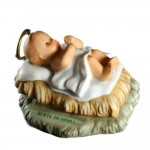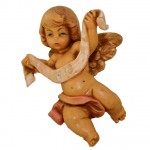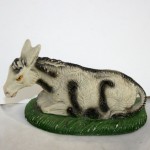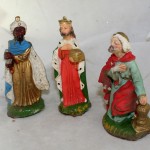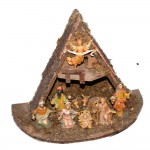 The nativity scene at Christmas is one of the most treasured traditions of Christians worldwide. A nativity scene has the basic elements of a background and figures. It can be constructed simply or with more elaborate staging and figures. So here’s the spiritual background for the nativity scene and later in this post, I’ll review the basic elements and how they should be placed in the scene.
The nativity scene at Christmas is one of the most treasured traditions of Christians worldwide. A nativity scene has the basic elements of a background and figures. It can be constructed simply or with more elaborate staging and figures. So here’s the spiritual background for the nativity scene and later in this post, I’ll review the basic elements and how they should be placed in the scene.
Spiritual Background
A nativity scene takes its inspiration from the accounts of the birth of Jesus in the Gospels of Matthew and Luke. Luke’s narrative describes an angel announcing the birth of Jesus to shepherds who then visit the humble site where Jesus is found lying in a manger, a trough for cattle feed.(Luke 2:8-20) Matthew’s narrative tells of “wise men” who follow a star to the house where Jesus dwelt, and indicates that the Magi found Jesus some time later, less than two years after his birth, rather than on the exact day.(Mat.2:1-23) Matthew’s account does not mention the angels and shepherds, while Luke’s narrative is silent on the Magi and the star.
Setting Up a Nativity Scene
The usual setting for a nativity is a stable, though sometimes a rock grotto is used. In this setting, the manger where the baby Jesus will rest is placed front and center. This placement is because Jesus is the most significant piece in the nativity. Some figure sets provide a separate manger and Baby, and some sets incorporate the two into one piece. In some traditions, the Baby is not placed in the manger until Christmas Eve, which is because he was not born until then.
Mary, the mother of Jesus, is usually placed right next to the manger. Some depictions have her fondly looking downward and this figure is placed so she is looking at the baby Jesus.
Joseph, the husband of Mary, is usually placed opposite of Mary either looking downwards at Jesus or looking away as if guarding the family. These five pieces make a complete basic set.
More elaborate sets include the angel who announced the birth to the shepherds. Often the angel is depicted as flying and is mounted at the apex of the stable.
The shepherds who visited the stable are also often depicted in a nativity scene. They are usually placed to one side or the other as if they have just arrived to see the Baby.
Since the stable is and was a stable, there are animal occupants also placed near the back of the stable. Most often a cow or ox, a donkey and sheep are depicted. Though other barn and farm animals are sometimes added.
Although there is no basis for it in the gospels, the three wise men are also frequently added to the scene. Sometimes they are depicted with their camels on which they traveled to see the Baby. They are also placed to make it seem as they just arrived. Some traditions do not place the wise men until Epiphany to indicate that they arrived later. The figurines are displayed somewhere else in the home until the day of Epiphany.

